We arrived at the Tehran Khomeini International airport a little after four a.m. By five our group had happily found each other, all relieved to have made it through customs and into the Islamic Republic of Iran. This Visualtraveling trip, orchestrated by Patrik Wallner for another one of his “skate-umentary” films, had been a long time in the making. But only minutes after a brief introduction with the Iranian skaters who had invited us, Kenny Reed and I, the only two Americans in the group, were intercepted by a short, older Iranian man named Ahmad. With a thick accent and a serious tone, Ahmad told us that he was our guide and we needed to leave with him. Immediately.
"We have to get to the city center by six."
Confused, Kenny and I were shuffled out of the airport and onto a bus. It was there that he explained the complications of our situation. As Americans, Kenny and I were not going to be doing what the rest of our group would be doing. In fact, Ahmad hadn't even known that we were traveling with anyone else. To him, we were two “cultural tourists,” and we were now his responsibility. Anything we did had to be planned and authorized by the travel agency he worked for. Out of the bus and into his car, Ahmad raced us through the empty early morning streets of Tehran, the only time we would see that enormous and very modern looking city not completely congested with traffic. Apparently there was a checkpoint of sorts that he needed to cross by six a.m. After making it through and dropping us off at our hotel, Ahmad told us that we were not, under any circumstances, allowed to leave the hotel without his escort. Bewildered but exhausted, Kenny and I stopped trying to explain why we had actually come to Iran and settled into our shared room to try and get some sleep.
Later that day, Ahmad returned to take us out for our first day as cultural tourists.
"No, no, we're here with our friends," we tried, again. "We're here to go skateboarding."
Ahmad didn't understand. He had our itinerary ready and we needed to get going. While Ahmad's English was superb, there were some concepts he just wasn't quite grasping. Skateboarding, as far as he was concerned, was not allowed. It was one of the many forbidden activities and was certainly not included in our “itinerary,” a word he overused and pronounced with an emphasis on every vowel in a way that would come to drive me and Kenny insane. Eventually our friends turned up at our hotel with MJ Rahimi, the local Iranian skater who had invited us and coordinated everything for our visas. MJ is the dedicated ambassador for skateboarding in Iran and has created an amazing community through the skate camps he’s organized at a park he helped build. He even presses his own decks in his basement, as it is difficult and extremely expensive to import them. He was thrilled to be the first to host professional skateboarders from the West, but Ahmad was throwing a kink in the plan. After MJ and Ahmad argued back and forth in Farsi for a while, we learned what the problem was. As it turned out, the only visas available to the Americans were ones that came with a guide and a government-approved travel plan. That extra $1100 Kenny and I had each been told we had to pay for our visas only a few days before arriving was not the cost of bureaucratic processing, as we’d thought. Without realizing it, we had simply paid for Ahmad and his services.






There wasn't any getting around it. Ahmad would not deviate from his itinerary and go along with our intended skate trip. We said goodbye to the Visualtraveling crew and hopped in Ahmad's car. For the remaining ten days, we may as well have been in North Korea for all the restrictions we had, while the Euro bros were pretty much in Barcelona. They crashed with the locals, ate home cooked meals, and drove around freely, skating wherever they wanted to with ease and enjoyment. Meanwhile, Kenny and I reluctantly admired ruins and museums, dragging our feet from fire temples to mosques. I felt like a bratty kid on vacation with my parents, the whole time imagining what my friends were doing back home. There we were in the mysterious land of Persia, a beautiful country few Americans ever have a chance to visit, imprisoned in nice hotels and pleasantly chauffeured around to breathtaking sites, all the while wishing desperately that we were goofing around on our skateboards on the other side of town.
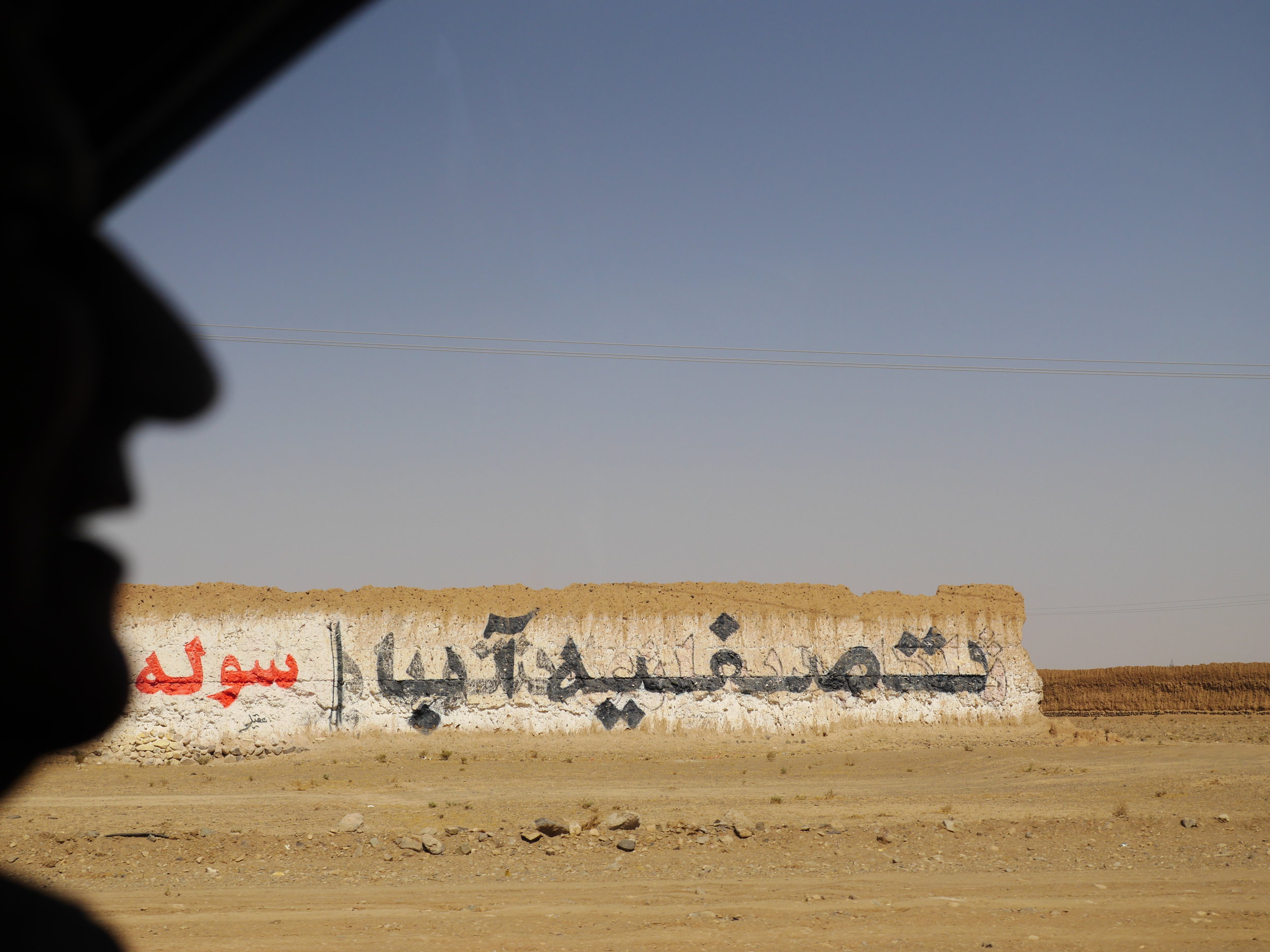

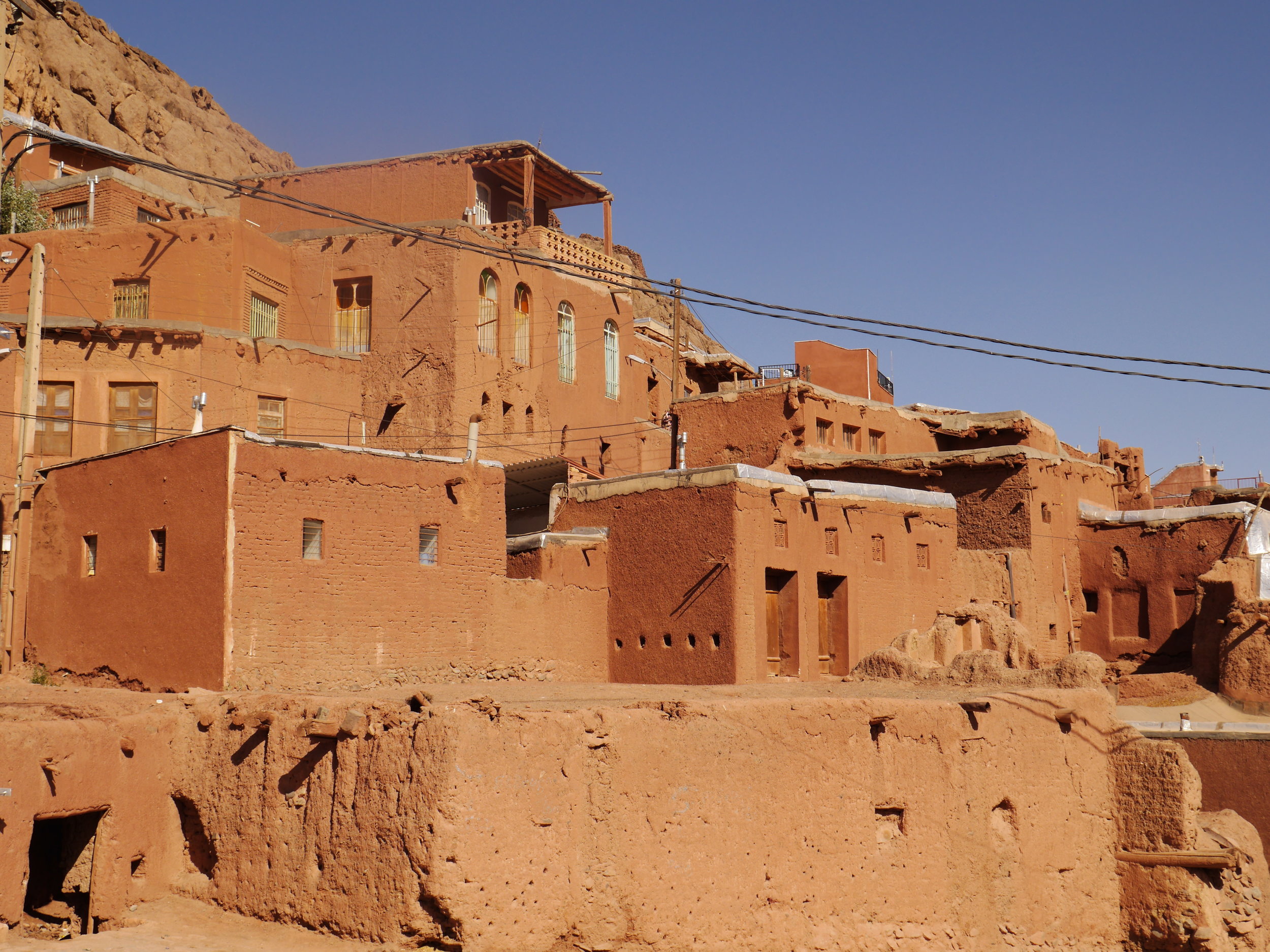


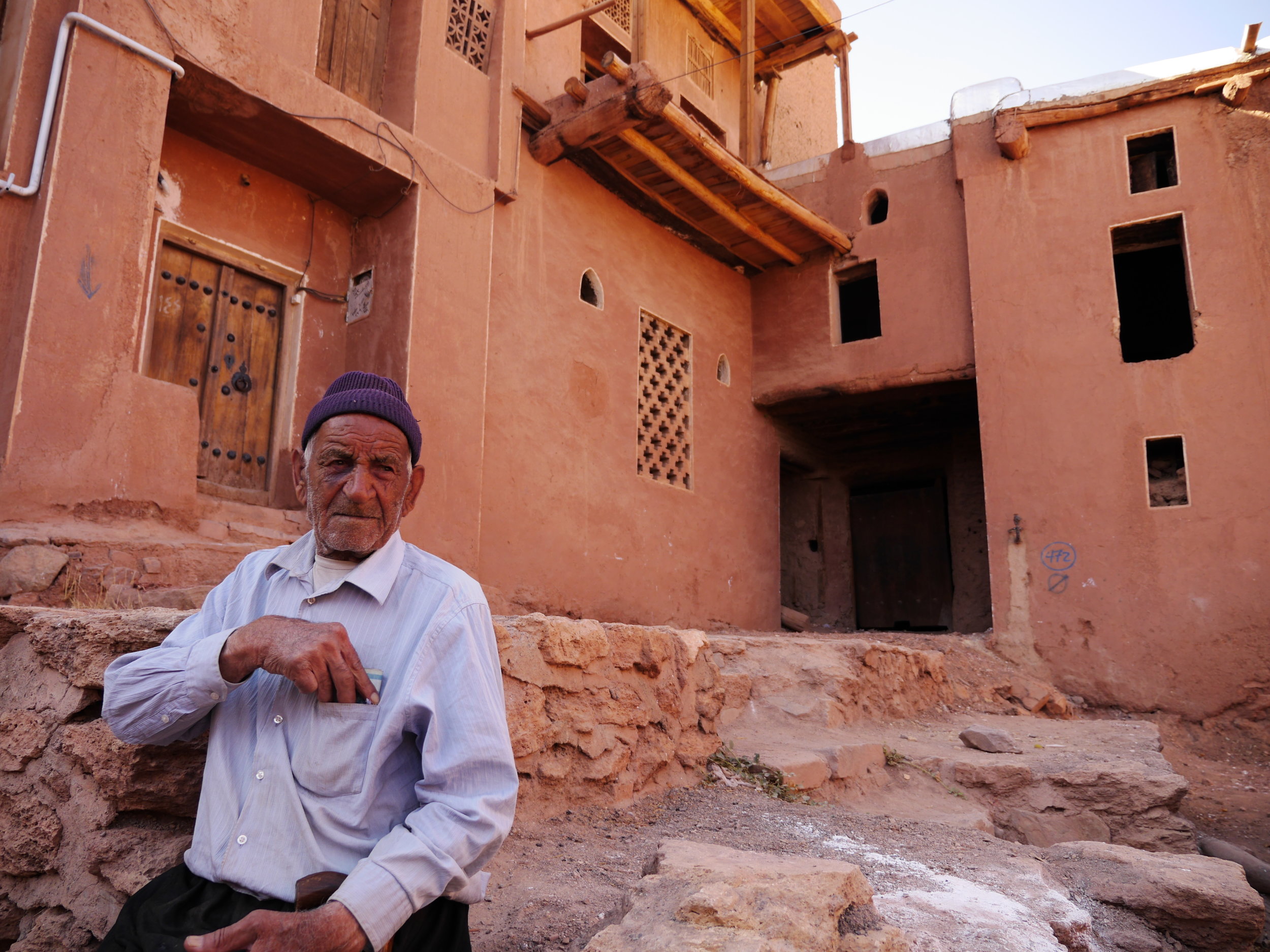






Despite stripping us of our freedom, Ahmad turned out to be a wonderful guy who was actually pretty understanding of our predicament. He was simply providing the service we'd accidentally paid for and he did not want to do anything to jeopardize his job. As we traveled from Tehran to Shiraz and on to Isfahan, Ahmad was instructed by his agency to give the local police a play-by-play of what we were doing each day, so they could have an idea of where we were at all times. If we had left Ahmad and snuck off to go skate with our friends and then say, got into a situation with the cops, as is common for skate sessions in public places anywhere in the world, we would have been putting Ahmad in a position that could get him into trouble. “Getting into trouble,” as we learned, has a very different meaning in Iran.
Alcohol is outlawed in the Islamic Republic, which we had heard before arriving, but it wasn't until we were there that we learned what that really meant. Was it outlawed like weed is outlawed in some states, I had wondered, where getting caught could result in anything from community service to felony charges? At one point I asked Ahmad what happens if you get busted boozing. Ahmad answered casually, as if it was as normal as a traffic violation.
“Sixty lashes. Maybe eighty.”
Women in Iran are required by law to wear some form of a hijab anytime they are in public and we never once saw an adult woman with her hair exposed. One night at a fancy restaurant with Ahmad we were joined by two of his friends, a married couple in their forties. At one point the wife's hijab slipped, revealing some of her hair, and the waiter rushed over to our table and ordered her to fix it. It was sickening to watch her follow those orders, her husband unable to say anything, like she was a child in class being reprimanded for bad behavior.
Our separation from our friends revealed the tumultuous relationship between the USA and Iran that we so often hear about in the news. To understand why there is currently no formal diplomatic relationship between these two nations, it’s best to start with the Islamic Republic’s Revolution in 1979. Oppressed by the US supported monarchy that had ruled Iran for much of the 20th century, Iranian revolutionaries revolted and overthrew the government, kicking out the Shah, the king at the time, and establishing the Islamic Republic of Iran. During this movement, revolutionaries stormed the American Embassy in Tehran and took 52 Americans hostage for 444 days. Since then, the United States has completely cut their diplomatic relationship with Iran. The American Embassy in Tehran remains vacant to this day, its outer walls adorned with intense anti American murals. The most vivid of this hateful sentiment that we saw was a painting of the Statue of Liberty with Lady Liberty’s face replaced with a death skull.


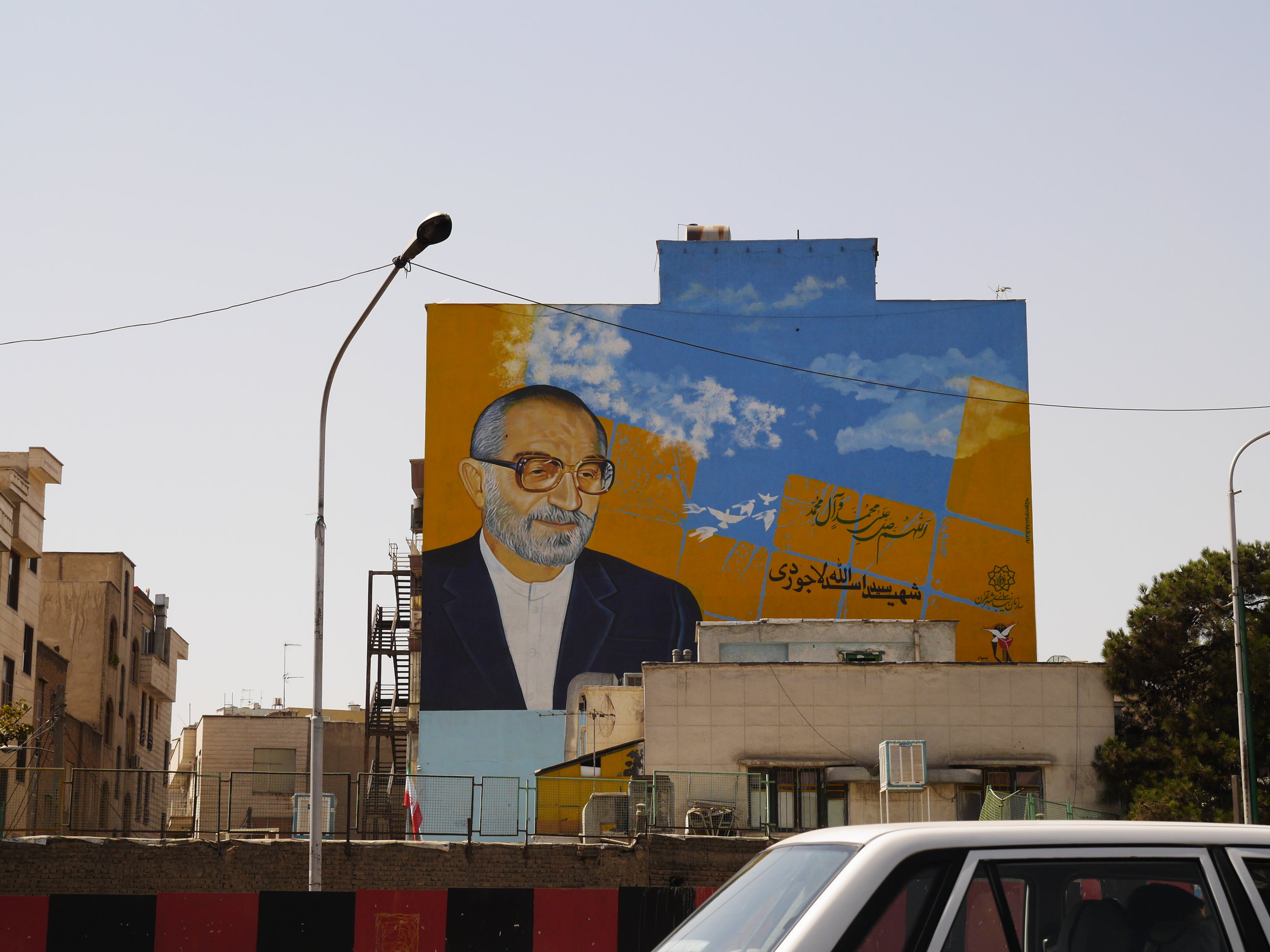
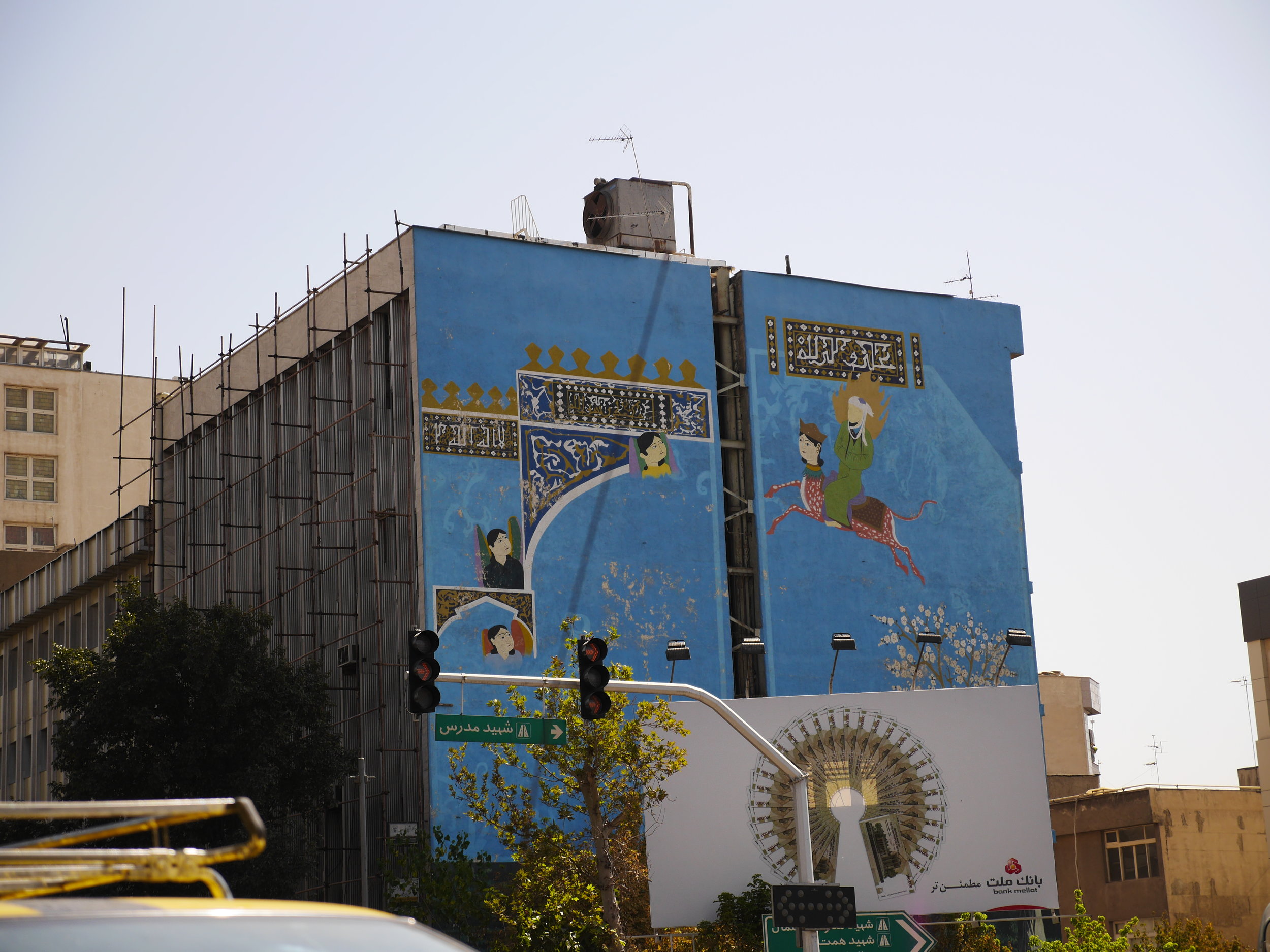







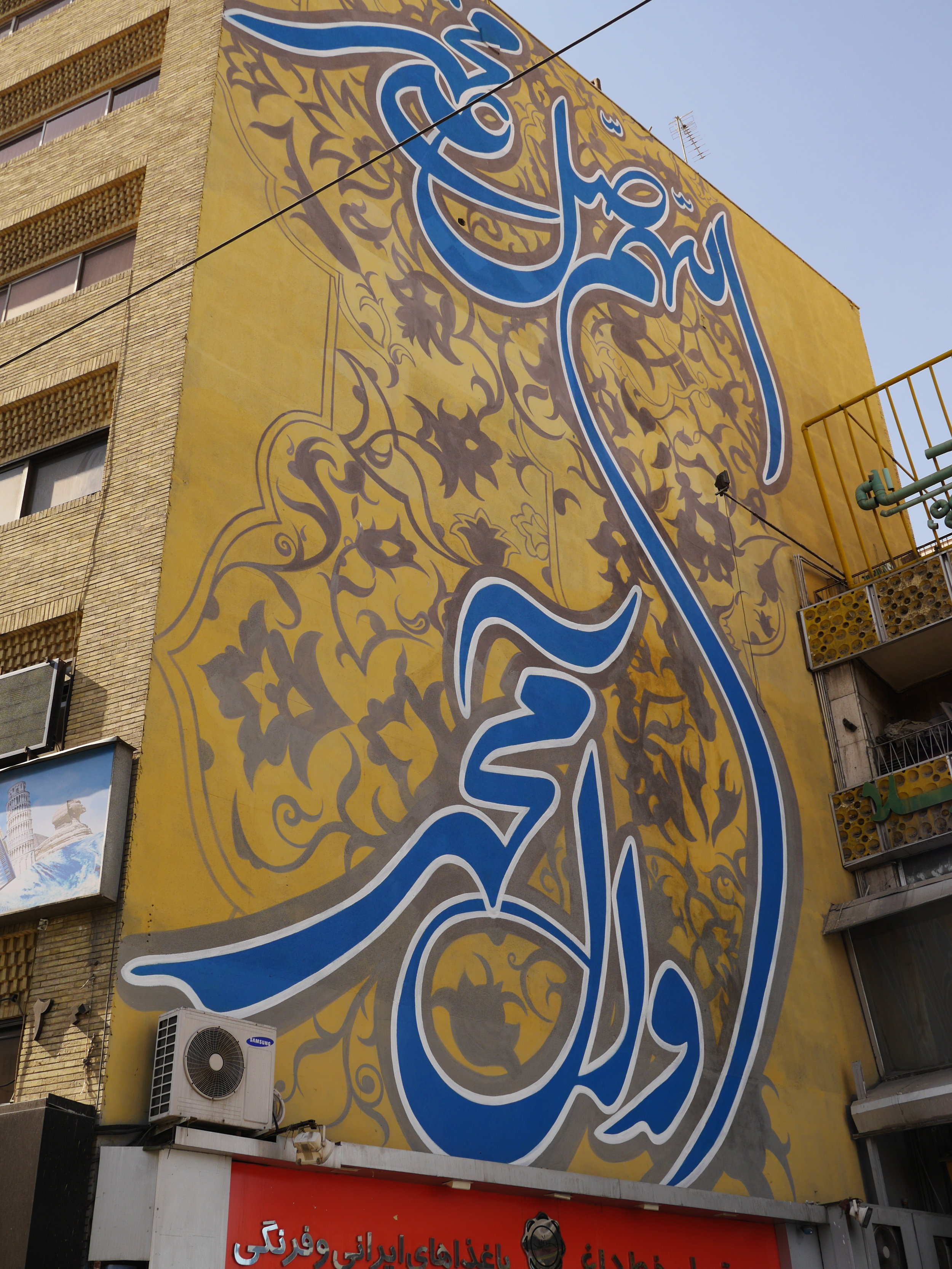

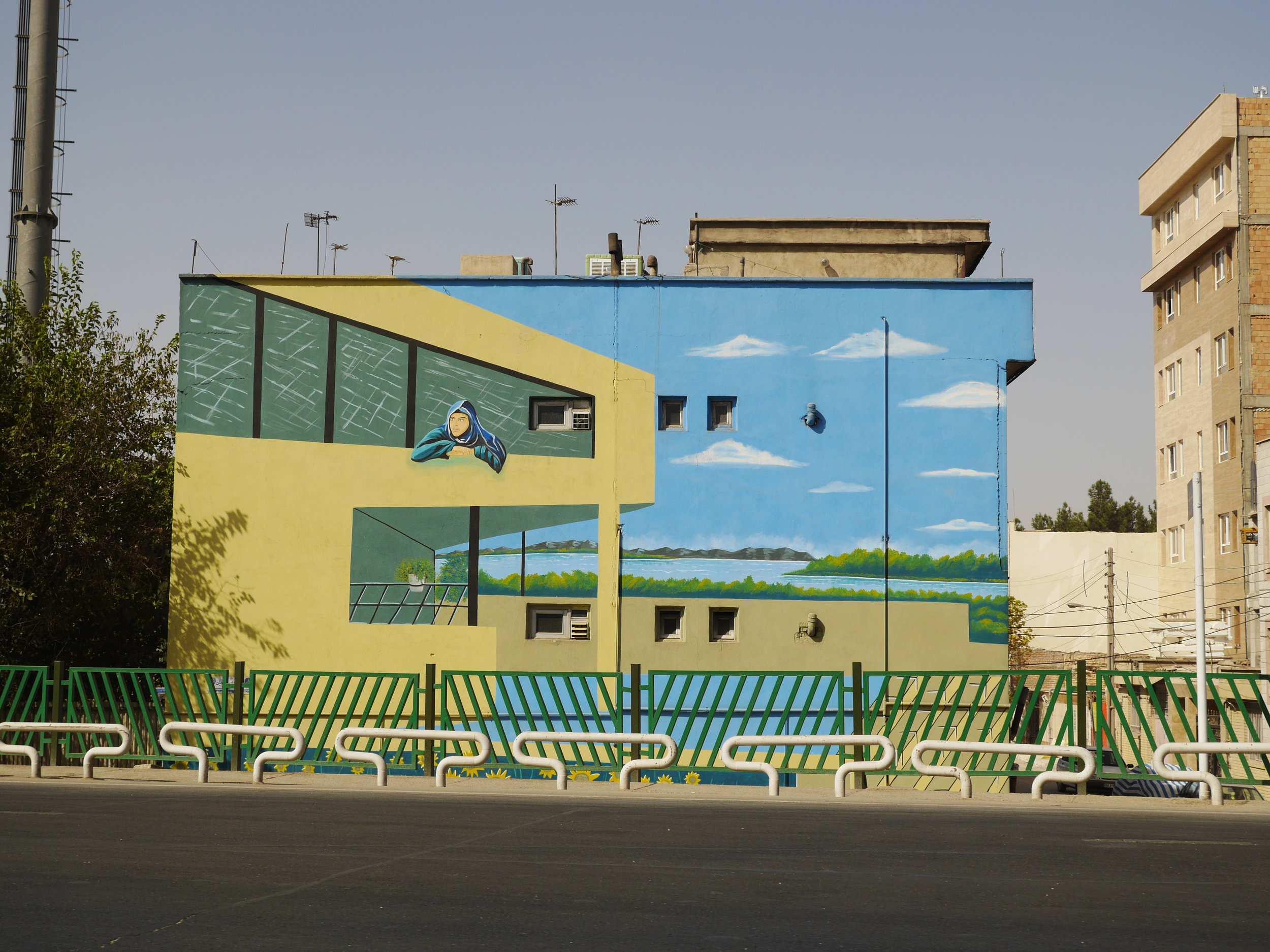
Shortly after the Revolution of 1979, a gruesome war between Iran and Iraq broke out. This war lasted eight years, during which the US supported Iraq. Driving around the country, you can see that this war is still very fresh in the memories of the Iranian people. Throughout the city of Tehran, for example, we saw hundreds of giant, colorful murals honoring the martyrs from that war. It was beautiful but strange, as I've never seen anything like it anywhere else in the world.
In the last couple of decades, in every attempt to resolve their issues, the USA’s suspicion of Iran’s affiliation with known terrorist groups and Iran’s potentially non-peaceful uranium enrichment program has hindered any formal diplomatic resolutions. Because of this suspicion and mistrust, the USA and the EU have imposed harsh sanctions on Iran that prevent the trade of many goods and services between them and much of the rest of the world. These sanctions have, to say the least, hurt Iran’s economy. While we were there, the first news story broke about the possibility of President Obama and Iran's President Rouhani having a face to face meeting. It was amazing to see the positive reception of this news from the Iranians we'd meet in passing. I never would have expected to see so many smiles and thumbs up towards us once they'd learn that we were Americans. But included in this diplomatic dispute, as we learned first hand, is a visa restriction that requires a guide for all US citizens visiting Iran. Taking all of this into consideration, our lack of freedom to do whatever we wanted in Iran was really not all that surprising.
Kenny and I were released from the tight grip of control by Ahmad at the border of Azerbaijan. We didn’t see our companions once we crossed into freedom but we did find a Mafioso-looking Azerbaijani who was willing to drive us the four hours to Baku for pretty cheap. During that drive our driver spent most of his time texting on his flip phone in the oncoming traffic’s lane, narrowly avoiding head on collisions at eighty or ninety miles per hour. It was terrifying. Gearing up for this trip I’d been so worried about something horrible and dramatic happening to me in Iran, like imprisonment, kidnap, or death by crude torture, that I’d pretty much accepted that what would happen in Iran was out of my control. But in that car, after making it through Iran with out a single threatening moment, it didn’t seem fair to me that I was going to die in a regular old car accident in a country I knew next to nothing about. Dying in Iran could seem heroic, but Azerbaijan? Would anyone even care? By some stroke of luck we survived and arrived in Baku by midnight. We found a hostel and in the morning finally linked up with Patrik Wallner and the rest of the Visualtraveling crew.




Even in Iran, it was remarkable to see that skateboarding was thriving in the cities we visited. The Iranian government may not like to see their youth adopt cultural ideologies of the West, but I’m sure that skateboarding will be one subculture that will persevere. Although Kenny Reed and I may not have gotten the skate trip we had wanted, it was fascinating to actually see the country of Iran that sadly, so few Americans ever will. I'm so grateful to MJ for providing this unique opportunity and to Ahmad for so passionately sharing his country with us. Since I first wrote this story, we have seen the completion of a nuclear deal which aimed to limit Iran's nuclear activity and allow foreign inspections in exchange for sanctions relief, which seemed to show promising signs for peace and reconciliation. But as the USA has now have removed itself from the agreement, it seems we are moving back in time. I hope things move in a more positive direction soon. I’d really like to make a skateboarding return to Iran, free from the restrictions of a guided tour. No offense to Ahmad, he can still come and hang out if he wants to.
A version of this story was published in the April 2014 issue of Thrasher Magazine. Video and edit by Patrik Wallner.






